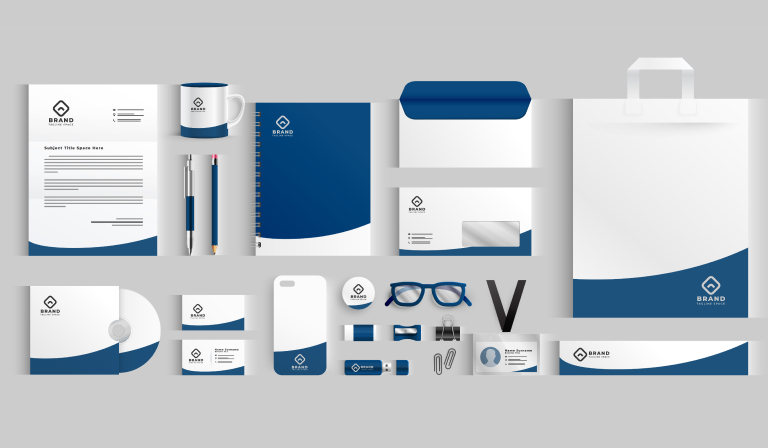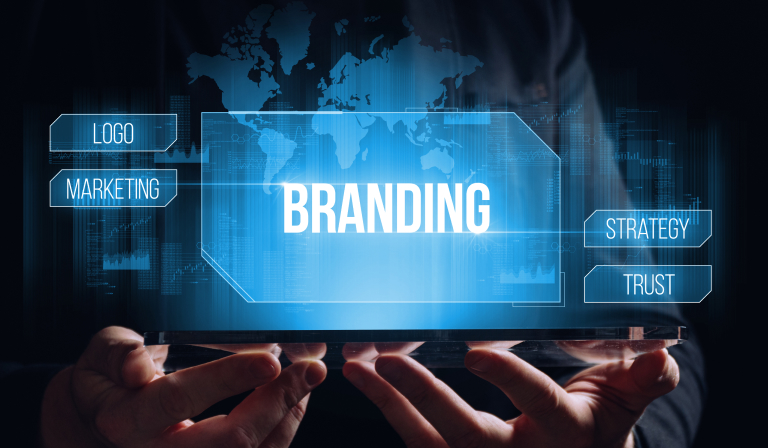If we challenged you to take a moment and recall all the brands from memory, how many could you confidently jot down? Would it be ten, fifteen, or perhaps even twenty-five?
What if we told you that the number of brands that you come across and subconsciously notice on an everyday basis is between 400 to 5000? Yes! This is a fact. It is important for a brand to come to notice and build loyalty, probably more than a single purchase. And this is exactly the reason why you need to necessarily, artistically, and consciously design your brand’s Identity.
WHAT IS A BRAND AND BRAND IDENTITY?
In the ever-growing rat race of marketing your business, whether it be a small business start-up, or a reputed multi-national company, products and services or any other commodity are giving way to the existence of Brands. A brand is much more than a set of product features and attributes. An appropriately shaped brand can instill consumer trust, credibility, authenticity, and assurance of performance. In a way, it is the relationship between a company and its customers. Living in a world without brands is akin to a dull world where everything is the same, it’s like living in a world with no challenges, no motivation, no innovation, and certainly no bright future
Brand Identity then, in simple words, is how a consumer identifies the brand. It refers to the individual or set of visible elements of a brand that identify and distinguish it in consumers’ minds. Distinct from a brand image, Brand identity refers to the intent behind the branding and the way a company does branding or brand management to nurture an identity in the customer’s mind.
Different elements that are instrumental in designing a brand identity are:
- Name
- Tagline/Catchphrase
- Logo
- Graphics, Colours and Shapes
- Sounds
- Scents
- Tastes
DESIGNING A BRAND IDENTITY
As brand value is intangible, it is difficult to quantify. Nonetheless, common approaches consider the cost of developing a comparable brand, the cost of royalties for using the brand name, and the cash flow of comparable unbranded businesses. Brand Identity is the reason behind consumers’ recognition of the brand. Building a brand identity is a trans-disciplinary strategic effort. Every element of the brand identity designed must contribute to the overall message and business goals. It can include a company’s name, logo, and design; its copywriting style and tone; the appearance and composition of its products; and, of course, its social media presence. This is why companies and businesses prefer outsourcing their branding to brand identity agencies or branding and marketing agencies, who could provide expertise in designing their brand identity.

While designing and building a brand identity is a continuous process and hence, cannot be distinctly defined in the form of a template, here are a few things to keep in mind when you’re designing one!
1. Analysis and Differentiation in a Crowded Market
This will help you go beyond the company’s vision, mission, and objectives. While these are the things that should be reflected in your brand identity design, what should also be a matter of focus is your Point of Parity (POP) and Point of Difference (POD) – what makes you a part of the market and what makes you stand out in the market.
2. Targeted Audience Engagement
Conducting surveys, convening focus groups, and holding one-on-one interviews can help a company identify its consumer group. Subsequently, it will help the company decide the tone and voice of the brand, the kind of engagement tools you should be using to engage the target audience with your brand, and define other modes of communication for effectiveness in branding and marketing strategies.
3. Consistency and Recognition
These are the cornerstones of a robust brand identity, ensuring that a company’s message and values resonate consistently across all touchpoints. Consistency in brand identity refers to the unwavering application of visual and verbal elements that define a company’s unique personality. Recognition, the result of steadfast branding efforts, is the capacity for consumers to promptly recognize a brand without overt branding cues. This imparts a sense of déjà vu, infusing the brand with a timeless allure.

4. Emotional Connection
When designing a brand identity, it is about creating a bond with consumers that goes beyond functional attributes. It’s about tapping into their emotions, evoking feelings of trust, empathy, and belonging. Storytelling is a powerful tool for forging these connections. By sharing narratives that resonate with consumers’ values and aspirations, brands can create a sense of shared experience, purpose, and most importantly, trust.
ABOUT THE GO-TO GUY!
The Go-To Guy! is an award-winning creative and digital agency that believes that building a compelling brand is about getting the basics right – great design, great copy, and great digital! We understand that your brand isn’t just your name or logo. It’s what’s within – what you believe in, what drives you, and what makes you stand out. That’s why we first create your brand positioning strategy – everything else follows suit. Designing a Brand Identity is one of our specializations! We work in areas of Brand and competitor Research, Customer Persona, Brand Architecture, Positioning Framework, Communication Strategy, and Brand Launch/Rollout Strategy.

